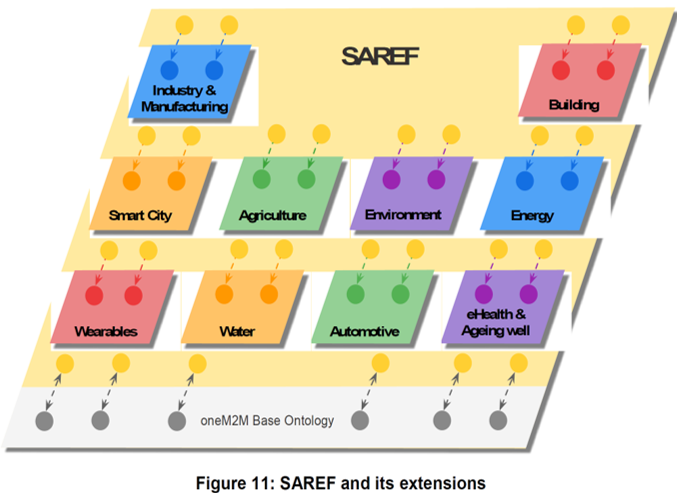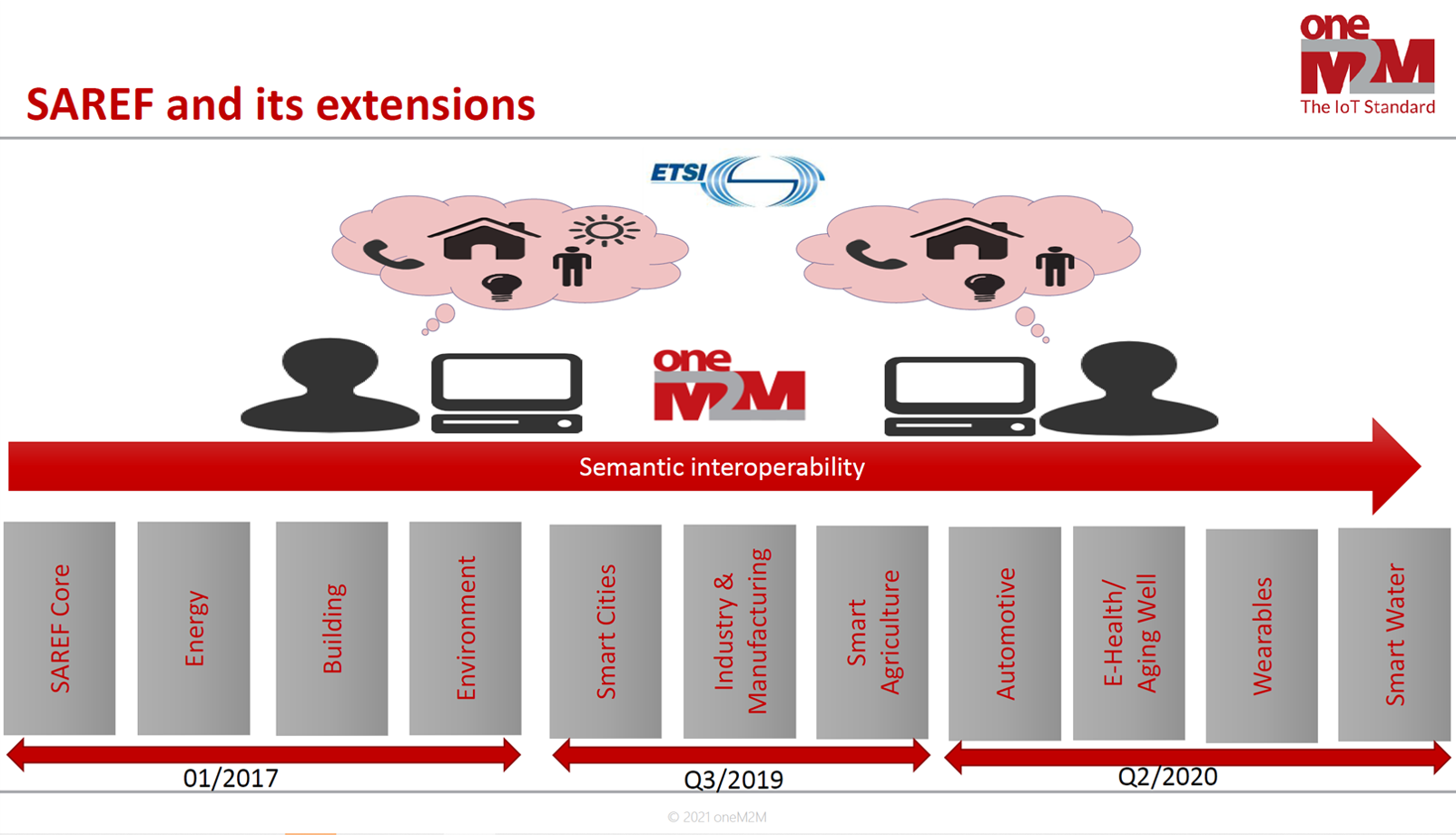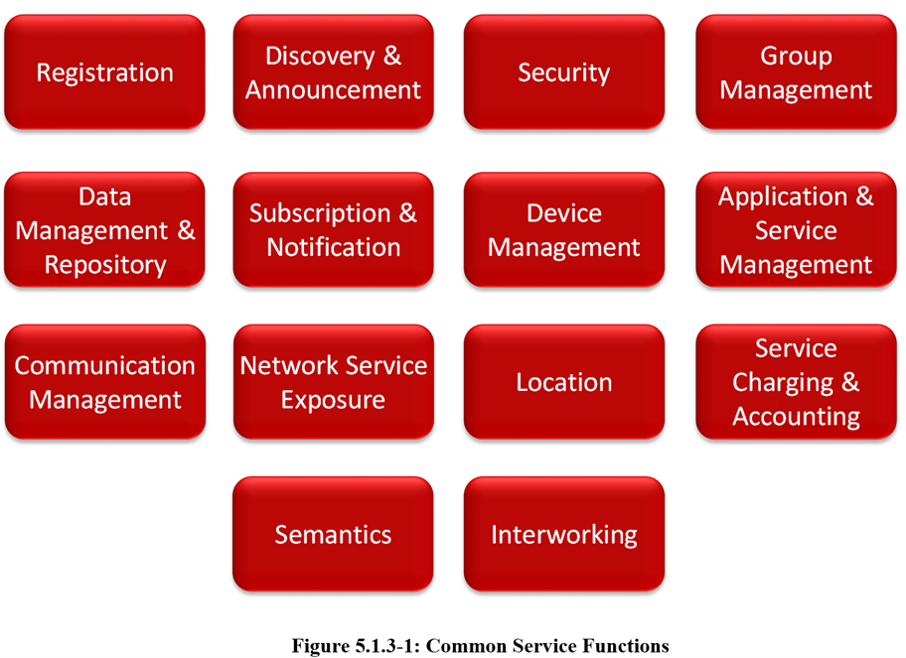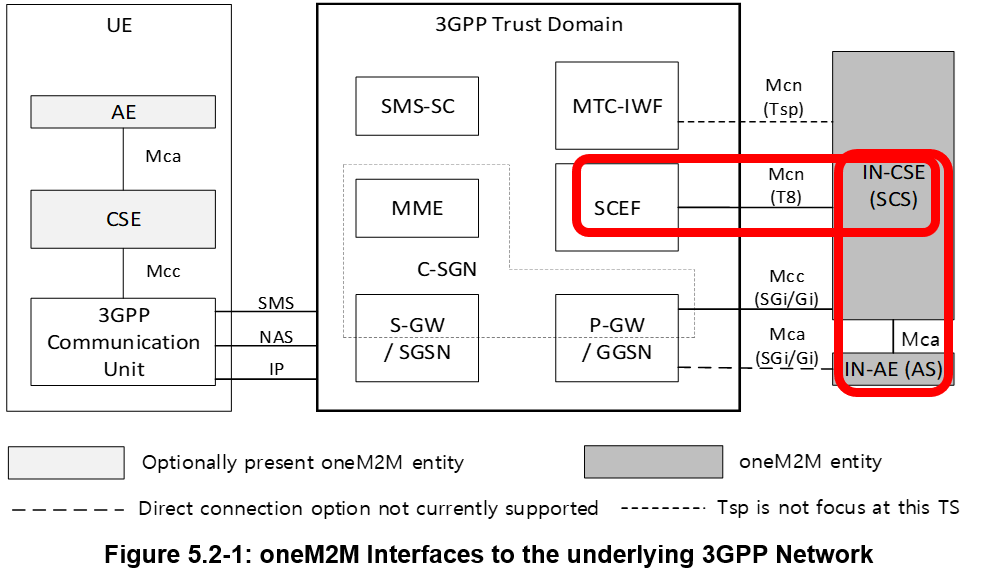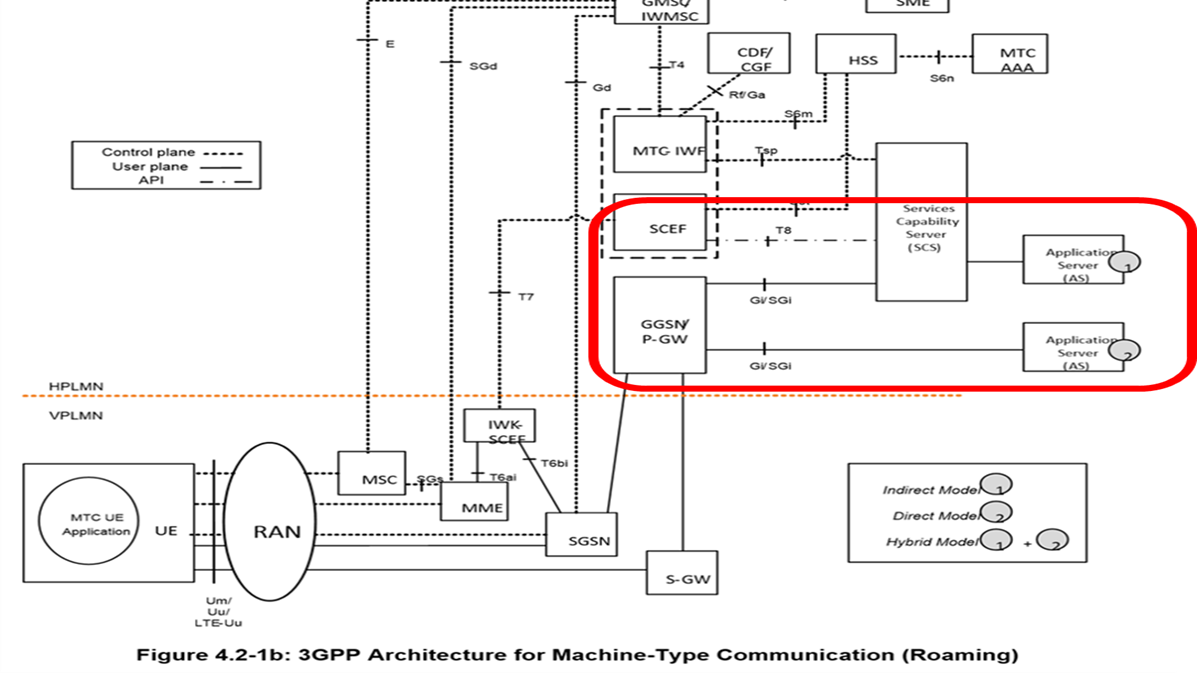...
oneM2M supported IoT Use Cases (UCs) - SAREF (Smart Applications REFerence) Ontology
oneM2M supports IoT Use Cases (UCs) Smart M2M SAREF (Smart Appliances REFerence) Ontology. Initially, SAREF V1 was common to three (3) Domains, namely:
...
Furthermore, oneM2M has standardized how these Functions are being executed, i.e. is has defined uniform APIs to access these functions. Figure 5.3.1-1 shows a grouping of these functions into a few different scopes.
The Services above reside within a CSE (Common Service Entity) and are referred to as Common Services Functions (CSFs). The CSFs provide Services to the AEs via the Mca Reference Point and to other CSEs via the Mcc Reference Point.
...
The “3GPP Trust Domain” in Figure 5.2-1 captures the Functional entities that shall be part of the 3GPP Domain (the Network). Although the Figure 5.2-1 shows that the IN-CSE and IN-AE are outside of the 3GPP Domain, the IN-CSE may be part of the Operator domain (Fig. 4.2-1b).
The 3GPP Trust Domain provides three (3) Interfaces to SCS/CSE (Service Capability Server/Common Service Entity) for MTC:
...
The flow of Data has an important bearing on Architectural Components for IoT Solutions, that is part of the analysis of the impact of AI on IoT Architectures, in particular the oneM2M Service Layer. The typical focus is on Data that leads to some form of decision being taken and is classified as 'User-Plane' (UP) Data. The basic Model for IoT Solutions begins with sourcing Data from IoT Devices (illustrated in left-hand side of Figure 1 below). This Data then passes through a Signal Processing and Machine Learning (ML) Process to extract key features and to represent them as Knowledge-based Objects. The next stage of processing involves the Application of Rules-based AI in areas related to Reasoning, Decision making, Supervision and Explainable AI.
This workflow illustrates some of the Generic and Commonly used Data Sourcing and AI/ML Capabilities involved in supporting End-to-End (E2E) IoT Solutions. It also shows how AI/ML Capabilities depend on Service Layer Capabilities. An example (illustrated in right-hand side of Fig. 1) is the relationship between a Registration Capability that manages the Identify of a Device and its Value in providing information about the Provenance of Data used in Pattern Recognition or Causal Inferencing Functions. In this example, the act of tracking data provenance depends on a 'Registration' Service Capability. Provenance tracking can improve the quality and dependability of an AI/ML system and occurs in the background to 'User Plane' (UP) activity. In Architectural terms, such background processes and use of Data that improve the Quality of AI/ML Applications occur in what is referred to as the 'Control Plane' (CP).
...
